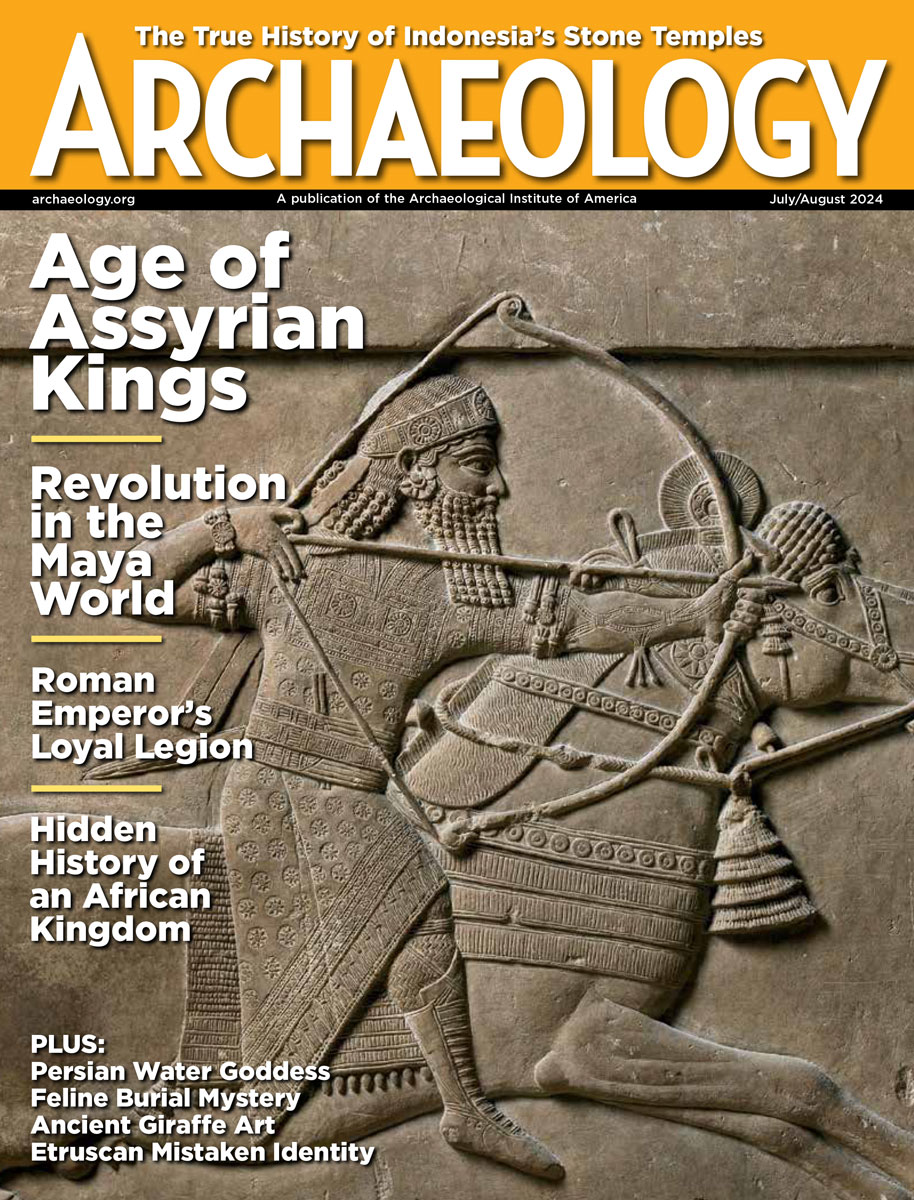Monday, February 2
February 2, 2009
Erosion has exposed more than 50 petroglyphs depicting people and animals on an island in Tonga. David Burley, of Simon Fraser University, has been called in to study the site.
While cleaning rainwater drains at Moenjodaro, archaeologists uncovered some structures from the city’s ancient drainage system, including an “elliptical lid” that may have held water for ceremonies. Â
Al-Ahram Weekly has more information on the recent discoveries at the Karnak Temples in Egypt.  Â
Salvage company Odyssey Marine Exploration is making headlines again with the discovery of the HMS Victory, a British man-of-war that sank in 1744. “We found this more than 50 miles from where anybody would have thought it went down,” claimed company co-founder Greg Stemm. A British Ministry of Defense spokesman responded: “Assuming the wreck is indeed that of a British warship, her remains are sovereign immune. This means no intrusive action may be taken without the express consent of the United Kingdom.” Odyssey Marine Exploration is currently being sued by Spain over a gold-laden, Atlantic Ocean shipwreck.   An article in The Telegraph on the announcement closes with a quote from Mike Williams, a law lecturer at Wolverhampton University and a member of the Nautical Archaeology Society. “If we allow Odyssey to go ahead with this operation, it will cause an uproar,” he said.  The Observer also weighs in on the discovery of the HMS Victory. Â
Dan Vergano of USA Today reviews the “scientific back-story” of Homo floresiensis, a.k.a. the Hobbits, and the four new papers published in the Journal of Human Evolution.  Â
Here’s another article on the stone tools dated to 1.8 million years ago that were unearthed in Malaysia.
- Comments Off on Monday, February 2
Friday, January 30
January 30, 2009
Tests at a Tokyo lab indicate that seven axes excavated in Malaysia are 1.83 million years old. The previously oldest-known stone tools in Malaysia are 200,000 years old, and were found at the same site.
A brick factory sits on a 2,000-year-old site on the Indonesian island of Bali. Workers have found stone artifacts, a sarcophagus, bones, pottery, and porcelain. “No, I’m not careful. We see broken bits of pottery all day. We know they’re old, but I have to keep working to make money,” explained one brick maker. Â
In 2003, Greece relaxed its laws protecting its 12,000 miles of coastline from scuba divers in an effort to boost tourism. Archaeologists say looters have taken advantage of the underwater archaeological parks by posing as tourists on yachts. Â
France has filed a claim to the Griffon in U.S. District Court in Grand Rapids, Michigan. The state of Michigan is also seeking title to the vessel, although state officials doubt that the timbers found on the bottom of northern Lake Michigan represent the wreck of LaSalle’s seventeenth-century ship. A private company, Great Lakes Exploration LLC, located the site in 2001 and has been seeking salvage rights to it. Â
The Huaca Rajada Museum has opened near Peru’s tombs of Sipan. It showcases Moche artifacts from the tombs that have been uncovered since 2007. Â
In Australia, bridge construction has revealed a steam-powered ship that sank during a cyclone in 1918. “They’ve found the remains of an old compass and a number of ornate dragon figurines, as well as the timber of the deck,” said government representative Tim Mulherin. Â
And in New York, a 1906 gas-powered motor boat on the bottom of Lake George has been listed on the National Register of Historic Places. “It’s very rare to find something from the 20th century on the register,” said underwater archaeologist Joseph Zarzynski.
- Comments Off on Friday, January 30









